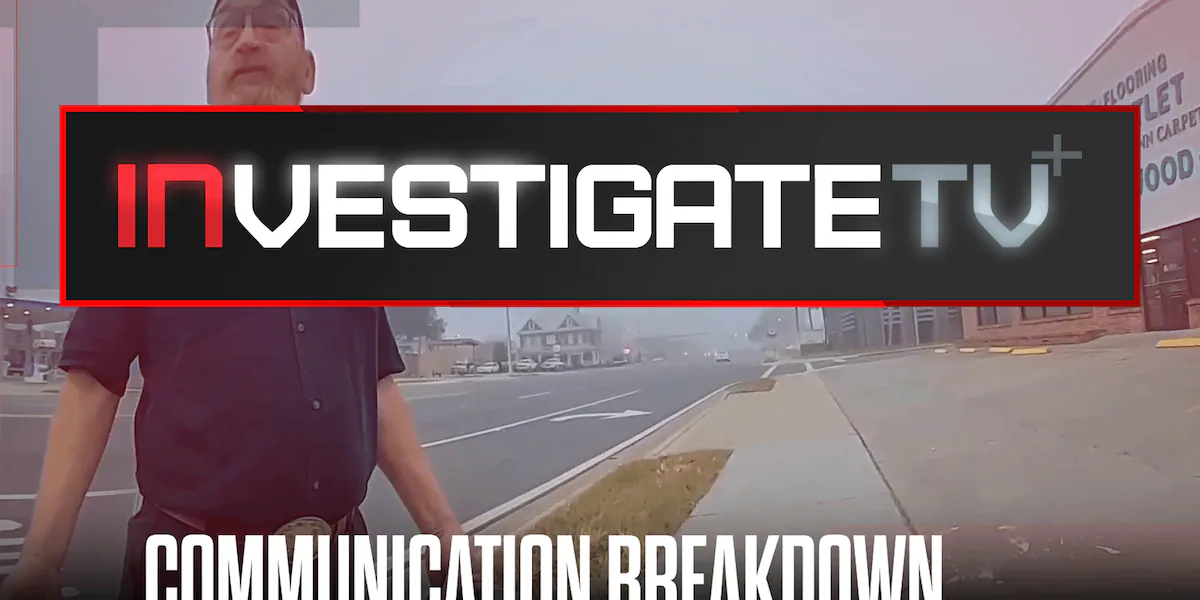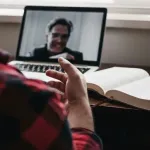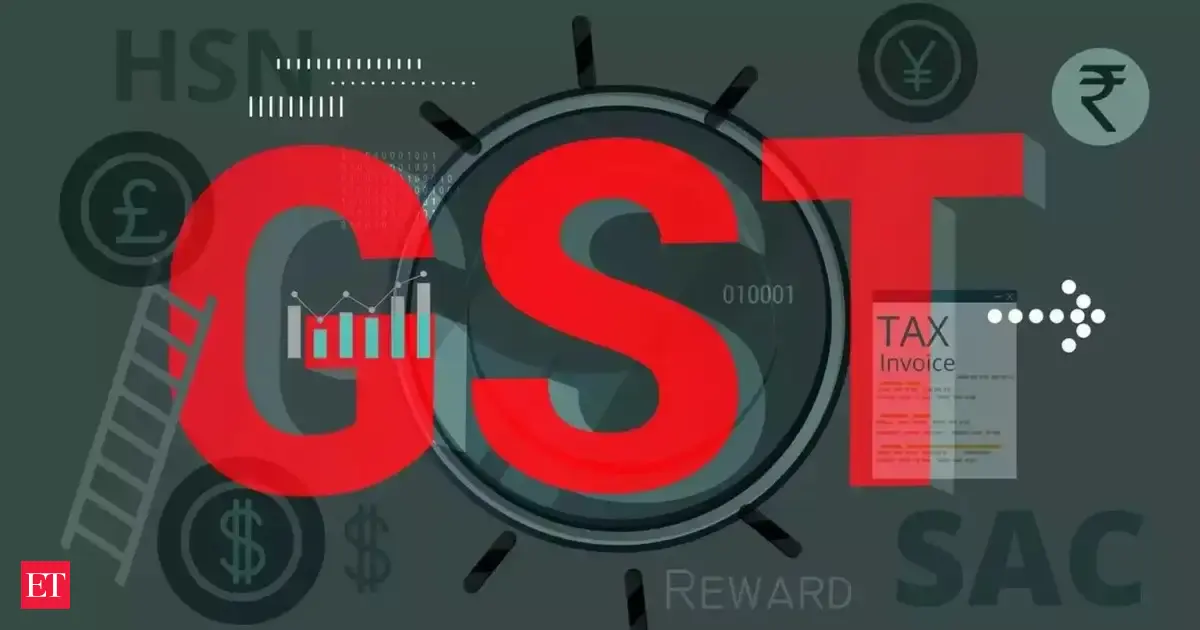
(InvestigateTV) — InvestigateTV+ takes an in-depth look at why few law enforcement officers are trained to recognize communication challenges and hear from those making strides to facilitate better understanding.
In this episode, we examine:
Dangerous misunderstandings between police and individuals with invisible disabilities can lead to wrongful arrests, highlighting a critical need for specialized officer training and new communication solutions.
For recently released inmates, the inability to obtain a government-issued ID creates a “paper prison” that blocks re-entry into society, but some sheriff’s departments and nonprofits are providing solutions to break the cycle.
A nonprofit founded by disabled veterans is tackling the crisis of isolation and suicide by creating a healing brotherhood on three wheels, using recumbent trikes to foster camaraderie and a renewed sense of purpose.
A beloved cafe that serves as a living museum of military history and a vital community hub for veterans is preserved and enhanced by a nonprofit, ensuring its legacy of honor and service continues.
A Dangerous Disconnect: When Invisible Disabilities Meet Law Enforcement
For most people, a routine interaction with a police officer, like a traffic stop, is a straightforward, if stressful, event. But for individuals with invisible disabilities such as blindness or deafness, these encounters can quickly escalate into confusion, conflict, and even wrongful arrest. A nationwide investigation reveals a critical gap in police training that leaves both officers and citizens at risk.
The story of Jim Hodges, a disabled Navy veteran, is a stark example. While walking home from jury duty using his white navigational cane, he was stopped by deputies in Lake City, Florida. They mistook his folded cane for a gun. The encounter, captured on body camera, quickly devolved as Hodges, who is legally blind, was unable to comply with commands in a way the officers expected. Despite explaining his disability, he was arrested for resisting an officer and spent 26 hours in jail.
His case is not an isolated one. Across the country, deaf individuals have been subjected to force for not responding to verbal commands they couldn’t hear, or for using sign language, which officers have mistaken for a threat. “If I try to sign, they back away from me thinking maybe I have a gun or some kind of weapon,” one deaf individual explained.
The root of the problem is a lack of training. Few states mandate that law enforcement officers receive specific instruction on how to recognize and interact with individuals who have communication challenges. Kim Chai Chester, who helps train police for the Alabama Institute for Deaf and Blind, says this training is key to safety. “You don’t see the uniform because you can’t see anything,” she says, explaining how a blind person’s natural reaction to being grabbed could be misinterpreted as resistance.
A few states are leading the way with innovative solutions. Alabama mandates training on invisible disabilities. Oregon now includes deaf and blind instructors at its police academy. Texas has implemented a system that allows individuals to voluntarily disclose a communication challenge when registering their vehicle, which then alerts an officer during a traffic stop.
Chief Ronald Selin of the Mansfield, Massachusetts Police Department and an executive board member of the International Association of Chiefs of Police, emphasizes the importance of community-oriented policing. “The more that you know about your community, [the more you] can tailor your approach,” he says.
For Jim Hodges, who eventually reached a settlement with the sheriff’s office, the fight was about defending the rights he once fought to protect. His story is a powerful call for better training and understanding, to ensure that a disability is never mistaken for a crime.
No ID, No Future: Barriers prevent many from moving forward
For the more than 600,000 people released from America’s prisons each year, a second chance at life often hinges on a small, flat piece of plastic: a government-issued ID. Without it, the doors to housing, employment, banking, and even a reliable cell phone are firmly shut. Yet, for many former inmates, obtaining this crucial document is a nearly impossible task, creating a “paper prison” that traps them in a cycle of poverty and recidivism.
Timothy Bender, an inmate at the Ingham County Jail in Michigan, knows this struggle firsthand. “It is a very long time in and out of jail,” he says, explaining that his drug use and transient lifestyle have left him without a legal ID for three years. Now in a treatment program, he sees getting an ID as the first step toward rebuilding his life. “I’m able to open up doors that were closed to me,” he says.
He is one of the lucky ones. Through a partnership between the Ingham County Sheriff’s Office and the Michigan Secretary of State’s mobile office, he and 30 other inmates are able to get their IDs while still incarcerated. Sheriff Scott Wrigglesworth initiated the program, knowing that without an ID, many of the people released from his jail will end up right back behind bars.
The barriers to obtaining an ID are numerous. To get a birth certificate, which is often the first required document, a person may need to provide other forms of identification they don’t have, like a utility bill or a pay stub. There are also financial hurdles; a birth record can cost $30, a fee that is insurmountable for someone with no income.
“How is it I can’t get you an ID?” asks Ingham County Judge Rosemary Aquilina, expressing her frustration with a system that can identify, arrest, and jail a person, but cannot provide them with the basic document they need to become a productive citizen. She has appealed to state lawmakers to make IDs more accessible for those who are homeless, jailed, or simply can’t afford it.
While 21 states have laws aimed at helping former offenders get an ID upon release, these policies vary widely in their effectiveness. The program in Ingham County, funded by a nonprofit, is a model for a solution that removes the barriers and gives people like Timothy Bender a real chance to succeed. For him, the simple act of having his picture taken for an ID was a powerful moment. “It felt like I was doing something responsible,” he says. “Something positive.”
A Brotherhood on Wheels: How Veterans are Riding to Heal
For many veterans, the return to civilian life is a battlefield of a different kind. The invisible wounds of service—depression, loneliness, and a sense of purposelessness—can lead to a dark and isolating road. A 2023 study from the National Institutes of Health found that depression is a common mental health condition affecting former members of the military, often driven by combat experiences and the difficult transition back to a world that doesn’t always understand their sacrifice.
For Army veteran Reggie Curry, that road led to homelessness and despair. “I pretty much gave myself a deadline,” he shares, his voice heavy with the memory. “That if I’m not able to get a job or get some type of purpose in my life, that it wouldn’t even be worth me being here.”
The day before his self-imposed deadline, the universe intervened. He stumbled upon an event hosted by Forgotten and Not Gone, a nonprofit founded by disabled veterans Peter and Kelley Guidry. The event featured recumbent trikes, and Reggie decided to take one for a ride.
“Immediately, I just felt like I had a purpose,” he says.
That purpose was shared by Peter and Kelley, who started the nonprofit after their own brush with the darkness of veteran suicide. Peter, struggling with his own demons, had also set a deadline. It was only when his VA psychiatrist recommended he get a bike that a new path opened up. The positive change was immediate.
“Within a month or so,” Kelley says, they saw a difference. They bought another bike, and then another, realizing they had found a powerful tool for healing.
Today, Forgotten and Not Gone brings veterans together for 22-mile rides, a number chosen to honor the estimated 22 veterans who die by suicide each day. The rides are more than just exercise; they are a rolling brotherhood, a space where veterans can connect, share their struggles, and find the camaraderie they’ve been missing.
“Our camaraderie is really what keeps me going,” Reggie says.
The Guidrys and the veterans they serve are open about their ongoing struggles. “A lot of people think that we have it all down pat, we’re fixed, we’re healed veterans, and that’s just not the case,” Peter says. But in helping others, they find their own strength. “I just refuse to be frozen in fear before I help my other veterans,” Kelley adds. “And by helping them, it’s helped me stay alive.”
An Inside Look at the Restaurant Where Every Wall Tells a Story
In a bustling breakfast spot in Myrtle Beach, South Carolina, the walls speak as loudly as the customers. The Veterans Cafe and Grill is more than just a place to get a good meal; it’s a living museum, a shrine to the men and women who have served our country.
Every inch of the restaurant is covered in military memorabilia—photos, uniforms, artifacts, and articles, each one a piece of a personal story of service and sacrifice. Air Force veteran George Volunteer is a regular and was the first to contribute to the collection.
“That’s my first fatigues I had in Vietnam,” he says, pointing to a uniform on the wall. “That’s my last day in Vietnam. It brings back a lot of memories.”
For George and the other veterans who gather here, the cafe is a place of comfort and community. “If I’m not in my house, I’m here,” he says.
The cafe, located on a former Air Force base, recently underwent a renovation, thanks to the nonprofit Veterans Welcome Home and Resource Center, which took over its operation. The goal was to enhance the museum-like feel of the space while continuing its mission to support veterans.
“There’s something extra special about this place, and we couldn’t let that just go away,” says CEO and Air Force veteran Scott Douban.
The renovation was a group effort, with veterans like Joey Dent Tino, an experienced painter who lives in the nonprofit’s tiny home village, lending their skills. “I believe there’s more honor in this building than there might be in the entire country,” Joey says as he carefully coats a wall.
The newly renovated space now features a timeline of military history, with artifacts and stories staged by era, from World War I to the present day. Each branch of the military has its own dedicated area, creating a space that honors the unique contributions of all who have served.
The cafe also provides employment opportunities for veterans, including some who are experiencing homelessness and living in the resource center’s housing. It is a place built on honor, where history, pride, and community are on the menu every day, and where every meal is served with a side of gratitude.



